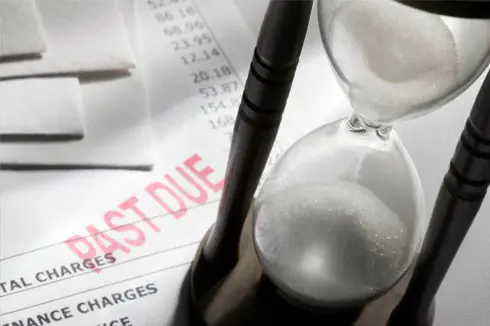Credit Card Debt Information
Learn the three basic steps to controlling credit card use and moving towards a debt-free budget.
You've probably heard the frightening statistic that the average American owes more than $8,000 in credit card debt. Fortunately, that statistic isn't completely accurate. Here are true credit card debt info and statistics.
Average Credit Card Debt
The average credit card debt is actually around $2,200. This is still a lot of money when you consider that the average income is $48,600, but it's not a dire figure.
However, only 45% of Americans have credit card debt. 23% of Americans don't even have credit cards. The remaining 32% pay their credit cards in full every month. 8.3% owe more than $9,000 on their credit cards.
If you carry a balance on your credit cards, you can become one of the 32% who doesn't. Although it seems challenging with rising fuel and food prices, resolving to cut back on your spending can make a real difference in your ability to pay debt without truly restricting your enjoyment of life.
Total Consumer Debt Info
You may be wondering how these statistics are derived. They're derived in part from the Federal Reserve's Survey of Consumer Finances, which is conducted every three years.
As of June, 2007 Americans had a total of $2.46 trillion in consumer debt, but this figure includes mortgages, auto loans, student loans, and other non-revolving debt. Revolving debt, which is usually credit card debt, was only $904 billion. While this figure is still high, it's not the devastating figure you're more likely to hear on the news.
What Can You Do?
If you're one of the people with revolving debt, you might be wondering how you become one of the people without it. It's not easy, but it can be done. The key lies in learning to control your spending. American society doesn't make that easy because our economy relies on spending, but if you have the willpower to do what's right for your personal finances, you can do it.
There are three basic steps to controlling credit card use:
- Stop using them for one month. See if you can pay for everything with cash in your pocket. Checks don't count. It must be cold, hard cash. Once you actually see the money leaving your pocket, you'll have a much better idea of your actual spending. You'll also discover your money cycle because you won't be able to spend money that isn't in your checking account. There are exceptions to this rule. For example, you can't pay your bills, rent, or mortgage in cash. Use checks for your monthly bills, but write them out and deduct them from your checkbook balance before you withdraw cash to spend.
- Reduce other expenses to free up more cash. Consider canceling or reducing cable, conserving energy, and buying less expensive groceries. Rather than putting the freed up cash in your pocket, use it to pay off debt, especially debt from high-rate credit cards.
- Avoid buying things you want, but don't actually need. Food is a need. Dinner in an expensive restaurant is not. Shoes for your children are a need. $200 designer sneakers your child will grow out of in three months are not. Transportation is a need. Unless you live up a steep, unpaved road, a $40,000 SUV is not. Impulse purchases are usually wants, not needs. Wait at least two weeks before buying anything. If you still want it after two weeks, it might be a need, or it might simply be something you really want. If it's something you need, buy it. If it's something you really want, buy it only if you can afford to pay cash without limiting your ability to pay off debt or save for retirement. If you're still paying off your credit cards, avoid buying things you want, no matter how much you want them.
Once you learn to control your spending and differentiate between needs and wants, you can pay off debt more quickly. Soon you'll be one of the 45% of Americans who pays off their credit cards every month, and you won't be contributing one dime to the $904 billion in revolving debt.
